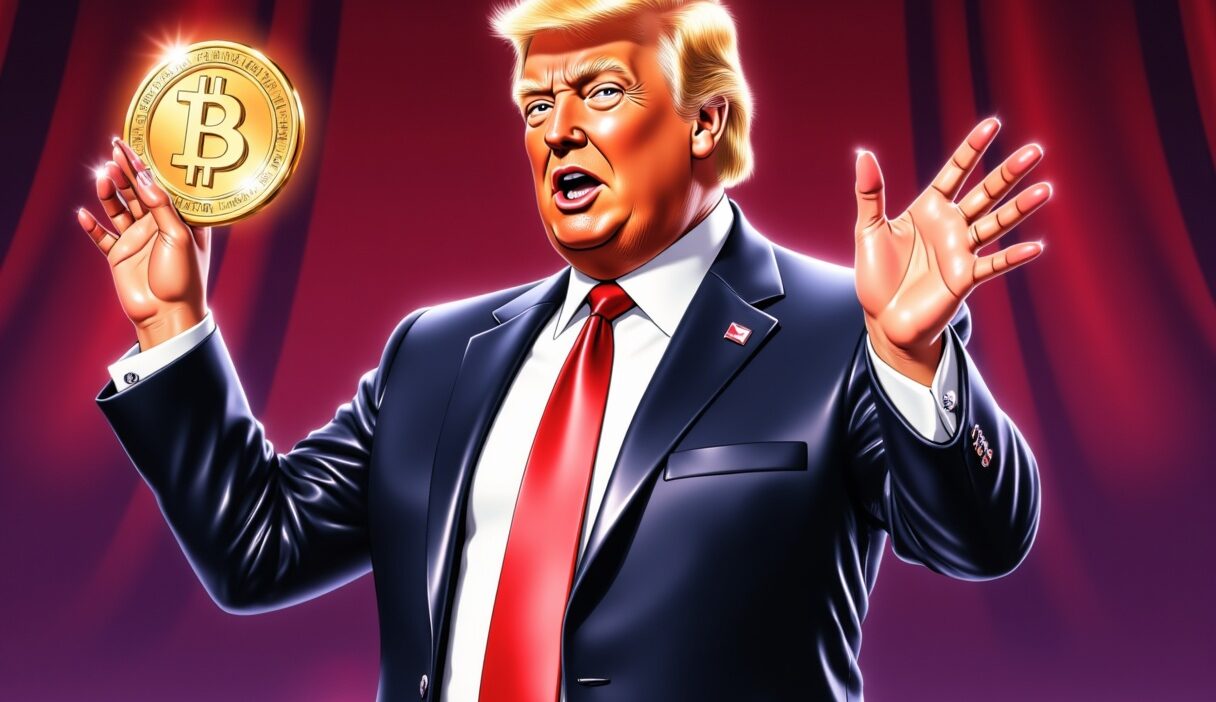Introduction: The White House Just Went Full DeFi
In the weirdest crossover episode of American politics and Web3 to date, the Trump administration (yes, he’s back) has officially announced a U.S. Crypto Strategic Reserve — a massive stockpile of Bitcoin, Ethereum, XRP, Solana, and Cardano.
The stated goal? To “preserve America’s financial sovereignty in a decentralized future.”
The actual result? A geopolitical sideshow, a climate controversy, and the kind of institutional embrace of crypto that makes libertarians sweat.
Critics are calling it a taxpayer-funded pump. Supporters say it’s the boldest financial play since gold-backed dollars. But whatever side you’re on, one thing’s clear: crypto is no longer counterculture — it’s state policy.
1. What Is the U.S. Crypto Strategic Reserve?
Think of it as Fort Knox, but for tokens.
Under Executive Order #15501, the U.S. Treasury — in coordination with a newly formed “Web3 Task Force” — is authorized to:
- Purchase and hold cryptocurrencies in government custody
- Allocate up to $50 billion USD equivalent over five years
- Store assets via a hybrid of cold wallets and federally regulated custodians
- Hedge against “central bank digital currency volatility in hostile regimes”
As of Q2 2025, the reserve reportedly includes:
- 150,000 BTC
- 3 million ETH
- 100 million XRP
- 80 million SOL
- 500 million ADA
So yeah — America is bag-holding altcoins now.
2. Who’s Behind This? Hint: It’s Not the SEC
While the Securities and Exchange Commission (SEC) still waffles over whether staking is legal, Trump’s crypto reserve isn’t being driven by regulators. It’s powered by political operatives, tech billionaires, and fossil fuel interests.
Key players include:
- Peter Thiel-aligned think tanks
- Former Coinbase execs now embedded in government task forces
- Oil-state lobbyists with big mining investments
If it sounds shady, that’s because it probably is.
One leaked internal memo literally describes the reserve as “a long-term hedge against digital yuan dominance and U.S. dollar erosion under multipolar finance.”
Translation: the U.S. is weaponizing crypto as a geopolitical asset.
3. Trump’s Crypto Flip: From ‘Scam’ to Strategic Asset
Back in 2019, Trump called Bitcoin a “scam” and tweeted that he was “not a fan of crypto.”
Fast forward six years, and his campaign sells Trump NFTs, accepts ETH donations, and now spearheads a federal token reserve.
What changed?
Two things:
- The money got too big to ignore — crypto’s market cap passed $5T in early 2025
- The enemies got clearer — China’s digital yuan is expanding into Africa and the Middle East, raising red flags at the Pentagon
Now Trump talks about crypto as a tool for “American digital independence” and “financial firewalls against globalist currency threats.”
It’s patriotism meets price action — and the narrative is working.
4. Environmentalists Are Pissed — With Receipts
You can’t hoard Bitcoin without mining Bitcoin. And while the U.S. isn’t mining the stash itself, it’s actively buying coins mined via proof-of-work networks — and that’s a problem.
Critics point out:
- Bitcoin mining consumed more energy in 2024 than the entire country of Argentina
- Over 60% of U.S.-based mining is still tied to nonrenewable sources
- Most miners in states like Texas and Kentucky are powered by subsidized fossil fuels
A report by the Environmental Justice Lab labeled the crypto reserve “a backdoor fossil fuel subsidy wrapped in digital hype.”
Greenpeace has launched a campaign titled “Stop Biden’s Blockchain, Stop Trump’s Tokens”, warning that crypto-backed fiscal policy could undermine carbon goals for the next decade.
5. A Massive Pump-and-Dump in Slow Motion?
Let’s be blunt: this looks a lot like institutional bagholding.
The U.S. is buying volatile, speculative assets with taxpayer money — while claiming they’re strategic reserves.
But there’s no oversight, no voting, no real economic model beyond “number go up.”
If prices crash? The Treasury eats the loss.
If prices moon? Who benefits? Voters? Or the insiders who front-ran the purchase order?
Already, rumors are circulating that the reserve is partially custodied by firms tied to Thiel Capital and Galaxy Digital — raising fears of insider trading and sweetheart contracts.
One X user summed it up:
“America just did a slow-motion pump-and-dump with public funds. We’re through the looking glass.”
6. Crypto Twitter Is Losing Its Mind (Again)
The reaction online has been chaotic:
- Some Bitcoin maxis are celebrating: “State adoption is the ultimate validation.”
- Others are horrified: “The state is literally co-opting the resistance.”
- ETH heads are arguing whether this makes ETH “state money” or “too centralized to be pure.”
Meanwhile, influencers are flipping:
- “We are so back.”
- “This is how the cycle ends — not with a crash, but with a procurement order.”
- “Degen meets Department of Defense.”
It’s a vibe shift. And nobody’s sure how to feel about it.
7. The Global Game: Why This Actually Matters
Behind the memes is a bigger story: this move might change international finance forever.
By anchoring part of its monetary strategy to crypto, the U.S. is:
- Decoupling from SWIFT-dominated systems
- Preparing for multi-polar digital reserve assets
- Setting up crypto as a fourth pillar of state finance (after bonds, fiat, and gold)
Other countries are watching:
- Brazil’s central bank has asked for U.S. reserve allocation data
- Russia is exploring crypto-for-oil contracts with Iran and Venezuela
- The EU is split between “ban crypto” vs. “tokenize everything”
Trump’s crypto stash may look like a meme — but it might also be step one in rewriting global finance.
8. Is This Legal? Nobody Really Knows
Buried in the fine print of Executive Order 15501 is a clause allowing the Treasury to hold “digitally native bearer assets” as long as they “serve national strategic ends.”
What does that mean? Depends who you ask.
Crypto lobbyists say it’s a green light. Federal watchdogs say it’s an open invitation to corruption. Lawyers are already prepping FOIA requests to uncover how the procurement process was done.
In other words: this is a legal gray area wrapped in patriotic branding and sealed with a Bitcoin sticker.
Conclusion: Financial Revolution or Taxpayer-Funded Gamble?
Trump’s crypto reserve is either:
- A visionary hedge against fiat collapse
- A massive, opaque financial experiment with no accountability
- A slow-motion pump campaign for the same altcoins retail was told to avoid
Maybe it’s all three.
But one thing’s certain: the lines between crypto and state power are officially blurred. What started as a resistance movement is now a treasury asset.
And for better or worse, crypto just became too big — and too political — to fail.
Trump’s Big Crypto Stash: Bold Financial Move or Climate Nightmare?
The content, Trump’s Big Crypto Stash: Bold Financial Move or Climate Nightmare?, published on Mugen:City is for informational and entertainment purposes only.
We do not offer financial advice, investment recommendations, or trading strategies.
Cryptocurrencies, NFTs, and related assets are highly volatile and risky — always DYOR (do your own research) and consult with a professional advisor before making any financial decisions.
Mugen:City, its writers, and affiliates are not responsible for any losses, damages, or financial consequences resulting from your actions.
You are fully responsible for your own moves in the degen world. Stay sharp, stay rebellious.





